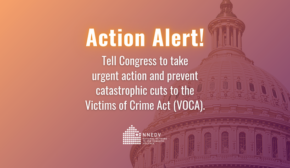Know Better, Do Better: How We Can Help Survivors of Violence Feel Empowered Online
December 23, 2014
This article originally appeared in the Mediaplanet “Violence Prevention” campaign in the Los Angeles Times. Through this campaign, industry advocates and leaders came together to discuss the root of violence in its various forms, as well as what we can do as a nation to put an end to it — today. The campaign was distributed through the Los Angeles Times on December 19, 2014 and is also published online.
In the past few months, the media has been in full swing over the hacking of many female celebrity intimate photos. Despite the vigorous discussions, very few have touched on the pervasiveness of online harassment for women and specifically for victims of domestic violence, sexual assault and stalking.
Online harassment isn’t new. For years, perpetrators have misused online spaces to harass, blackmail, control and bully victims in various ways, including accessing victims’ accounts to monitor their activities; spreading harmful lies about survivors through social media; posting sexually explicit images of survivors without their consent; and making violent threats or harassing survivors through anonymous accounts.
Supporting survivors
As we grapple with policing these spaces and holding perpetrators accountable for their crimes, a core issue that deserves more discussion is how to support survivors of online harassment and abuse. In far too many cases, when survivors report abuse, the typical advice is: “Why don’t you just close your Facebook account?” Survivors are told to remove themselves from spaces that they have every right to be in and to change how they live their lives—despite having done nothing wrong.
If survivors choose to stop using a certain technology or stop being online because that makes them feel safer that is one thing. But that shouldn’t be the default answer or solution to survivors who are dealing with abusive individuals. Telling survivors to stop using technology not only inappropriately puts the responsibility of the abuse on them, but also implies that they can control the abuse and that they have the power to stop it. Telling survivors to disengage from online spaces also assumes that this strategy will curb the abuse or harassment when this simply isn’t the case and could even escalate abuse and increase physical safety risks.
Furthermore, telling survivors to get offline minimizes the importance of the internet. Survivors, just like everyone else, use the internet in their daily lives: to access information, to connect with friends and family and to accomplish their professional work. The internet can also be a place of support, particularly if an abuser has isolated the victim from friends and family.
New strategies
Supporting victims of online abuse means that we need to offer creative strategies and tools to allow survivors to continue being online and use their technology safely. We need to educate survivors and their children about how to use the internet safely. Websites and social media sites need to create mechanisms that allow survivors to document and report online abuse. Law enforcement needs to take online threats and harassment seriously and hold perpetrators accountable. With these strategies, we can empower and give control back to survivors.
By Kaofeng Lee, Deputy Director of the Safety Net Project






